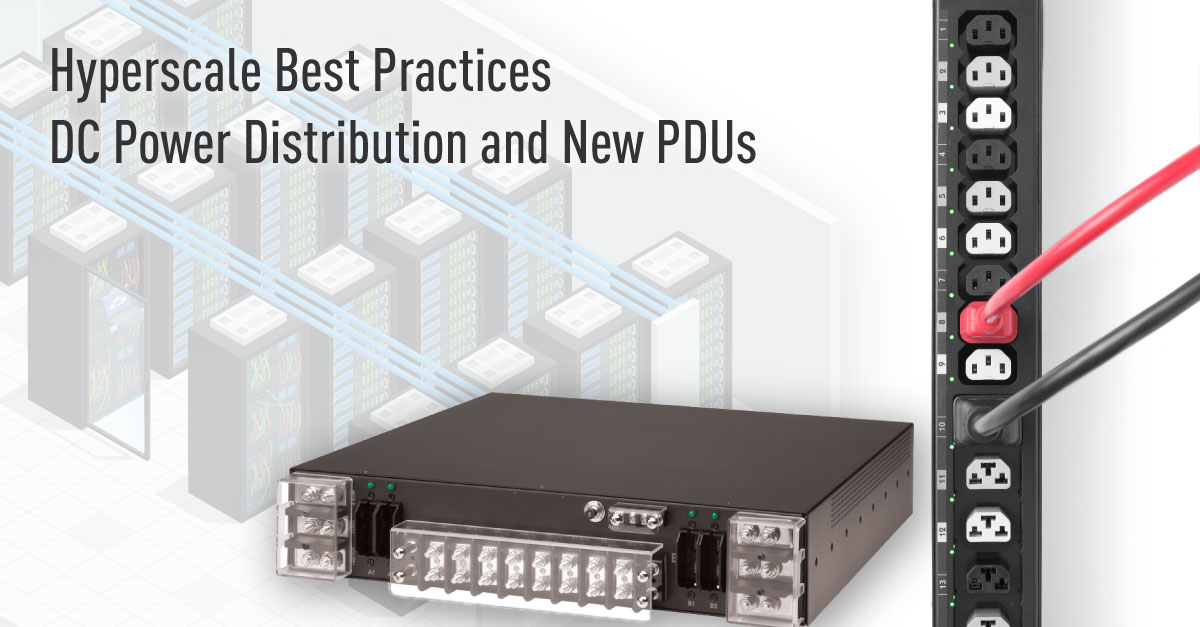Hyperscale Best Practices: DC Power Distribution and New PDUs
Annie Paquette
June 05, 2019
- Categories:
- Industry Trends and Solutions
- Tags:
- intelligent PDU

In the new Server Technology white paper “The Power of Hyperscale Computing 2019,” Marc Cram builds a connection between the recent relook at DC power distribution in hyperscale data centers and the intelligent PDU(s) that support them. One thing is clear: today’s hyperscale computing demands, and those of tomorrow’s enterprise computing facilities, require more than just an IP Power Strip or Network PDU to support these complex facilities.
There are numerous proposals across the IT industry that address which type of power infrastructure is best suited to the hyperscale data center. Early on, Facebook chose to go with 480V/277V AC power to the rack and 12VDC power to the IT loads within the rack. In Google’s recent contributions to Open Compute, they have likewise proposed 48V DC to power the servers, with direct conversion, point-of-load power supplies running from 48V to the working voltages and amperages needed on the motherboard to run the CPU and the memory.
In Google’s implementation, the power is distributed directly to the rack at 480/277V AC (or 400V/230V AC) with a 3-phase rectifier that is converting AC power to DC power within the rack itself. Microsoft’s most recent Open Compute contribution has 480/277VAC to the rack and 277V into the server, with dual 3-phase power supplies in the server enclosure. For those companies seeking to own the power generation equipment to run their data center, generating DC power on site and delivering that to the rack makes good sense. In that circumstance, bringing 380V DC power to the rack and running a DC to DC converter to drop to 48V is an option. They may even choose to bring 48V to the rack depending on distance between the power source and the IT rack.
No matter how you skin the cat, choosing a way to power the IT equipment in hyperscale data center starts with a series of distribution questions followed by some decisions that impact the endpoint of the power distribution path: the rack PDU.
Server Technology builds intelligent PDUs that can support any power distribution decision. With the launch of our Build Your Own PDU (BYOPDU), the data center designer gets to select input power, input cord location, outlet count by type (C13, C19, Cx), whether or not to use alternating phase power, color and so on to get a solution tailored to the unique requirements of the particular data center. BYOPDU introduced the versatility of our HDOT technology to the world and continues to build upon that with the introduction of our revolutionary HDOT Cx outlets that support both C14 and C20 plugs.
The HDOT Cx platform for hyperscale data centers combines the flexibility gained from having a common chassis enclosure, no matter the feature set, with the 2-in-1 capability of the Cx outlets. If you start with a HDOT Cx PRO2 Smart today, the HDOT Cx PRO2 Switched will fit into the same space in the rack later on if needed. The HDOT Cx outlet supports devices with C14 or C20 plugs that need C13 or C19 outlets respectively. This flexibility lets you design and populate your rack one way today and accommodate changes tomorrow.
Visit ServerTech today to get an idea of how flexible you can be when you build your own PDU using our revolutionary HDOT Cx technology.
Thanks for your submission. One of our Power Strategy Experts will get back to you shortly.